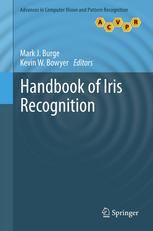

Most ebook files are in PDF format, so you can easily read them using various software such as Foxit Reader or directly on the Google Chrome browser.
Some ebook files are released by publishers in other formats such as .awz, .mobi, .epub, .fb2, etc. You may need to install specific software to read these formats on mobile/PC, such as Calibre.
Please read the tutorial at this link: https://ebookbell.com/faq
We offer FREE conversion to the popular formats you request; however, this may take some time. Therefore, right after payment, please email us, and we will try to provide the service as quickly as possible.
For some exceptional file formats or broken links (if any), please refrain from opening any disputes. Instead, email us first, and we will try to assist within a maximum of 6 hours.
EbookBell Team

4.7
76 reviewsThis authoritative collection introduces the reader to the state of the art in iris recognition technology. Topics and features: with a Foreword by the “father of iris recognition,” Professor John Daugman of Cambridge University; presents work from an international selection of preeminent researchers, reflecting the uses of iris recognition in many different social contexts; provides viewpoints from researchers in government, industry and academia, highlighting how iris recognition is both a thriving industry and an active research area; surveys previous developments in the field, and covers topics ranging from the low-level (e.g., physics of iris image acquisition) to the high level (e.g., alternative non-Daugman approaches to iris matching); introduces many active and open areas of research in iris recognition, including cross-wavelength matching and iris template aging. This book is an essential resource for anyone wishing to improve their understanding of iris recognition technology.